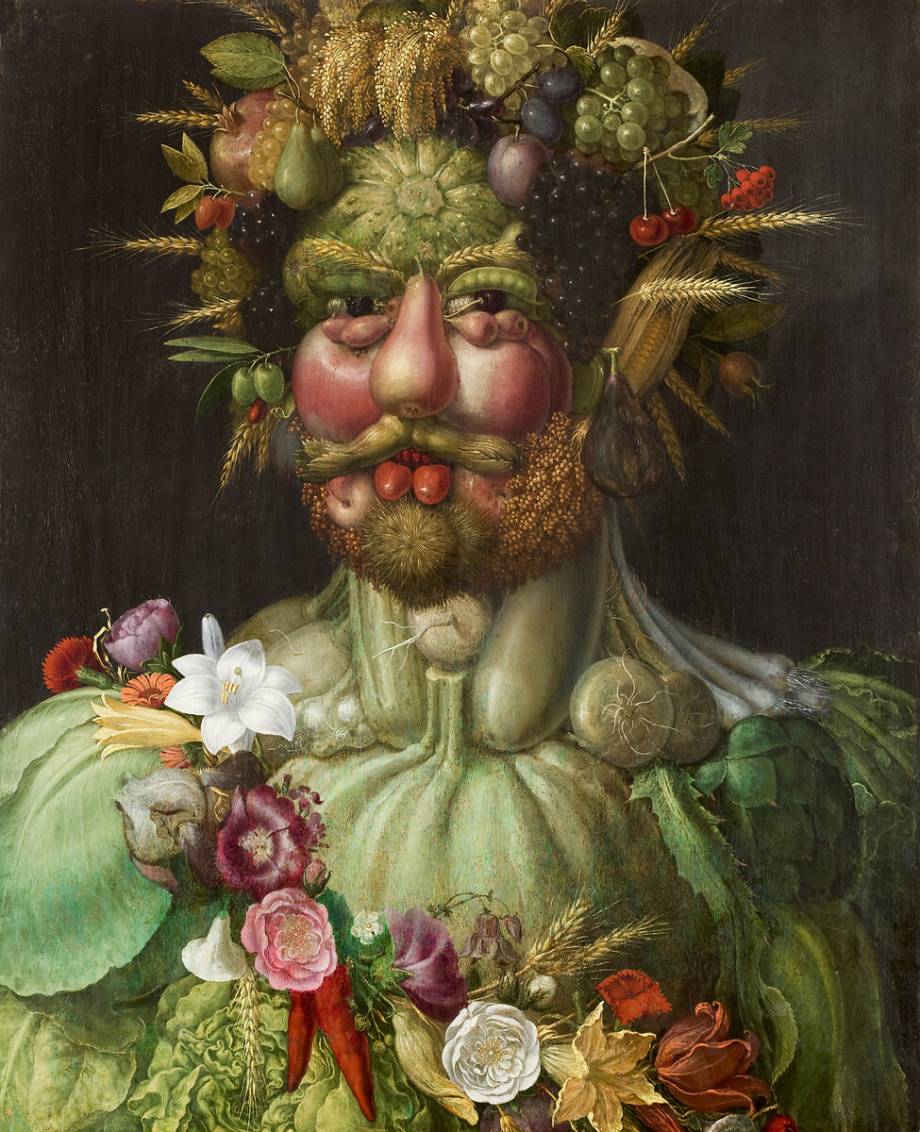Shop art print and framed art Vertumnus by Giuseppe Arcimboldo
Subjects : Portrait
Keywords : Greco-Roman god, Vertumnus, autumn, emperor, flower, fruit, portrait, vegetable
(Ref : 364149) © rawpixel.com
Customise
Your art print
Vertumnus OF Giuseppe Arcimboldo
The artwork
Vertumnus
Vertumne or Vertumnus is a painting by Giuseppe Arcimboldo in 1590, depicting Emperor Rudolf II disguised as Vertumne. The painting was part of the collection of works of art assembled by Rudolf II at Prague Castle and looted by the Swedes during the Siege of Prague, the last action of the Thirty Years' War in 1648. The painting is kept at Skokloster Castle in Sweden.
Vertumne, a semi-legendary and mythological character, was probably a king of pre-Roman Etruria: he attained divinity after his death.
This painting, an oil on canvas by Arcimboldo, dates from 1590 and is kept at Skokloster Castle in Sweden. It is 70 cm high and 58 cm wide.
The background is dark, bringing out the colours of the fruit and vegetables in the portrait. The light has no particular source and is evenly lit. The eye is focused on the portrait and not distracted by the background.
The four harvest seasons are represented in the portrait, and the different types of vegetables are not placed randomly.
The head is encircled by a summer crown of wheat, grapes, pomegranates, cherries, figs and plums.
The head itself is made up of autumn fruits and vegetables such as apples, grapes and pea pods. The teeth are visible, the chin is made from chestnut logs, the cheeks from apples and the nose from a pear.
The shoulders and torso are made up of green vegetables such as cabbage, leeks, onions and turnips. These are winter vegetables.
A scarf made of spring flowers might remind you of a nobility or army [...]
This artwork is a painting from the renaissance period. It belongs to the baroque style.
Find the full description of Vertumnus by Giuseppe Arcimboldo on Wikipedia.



































